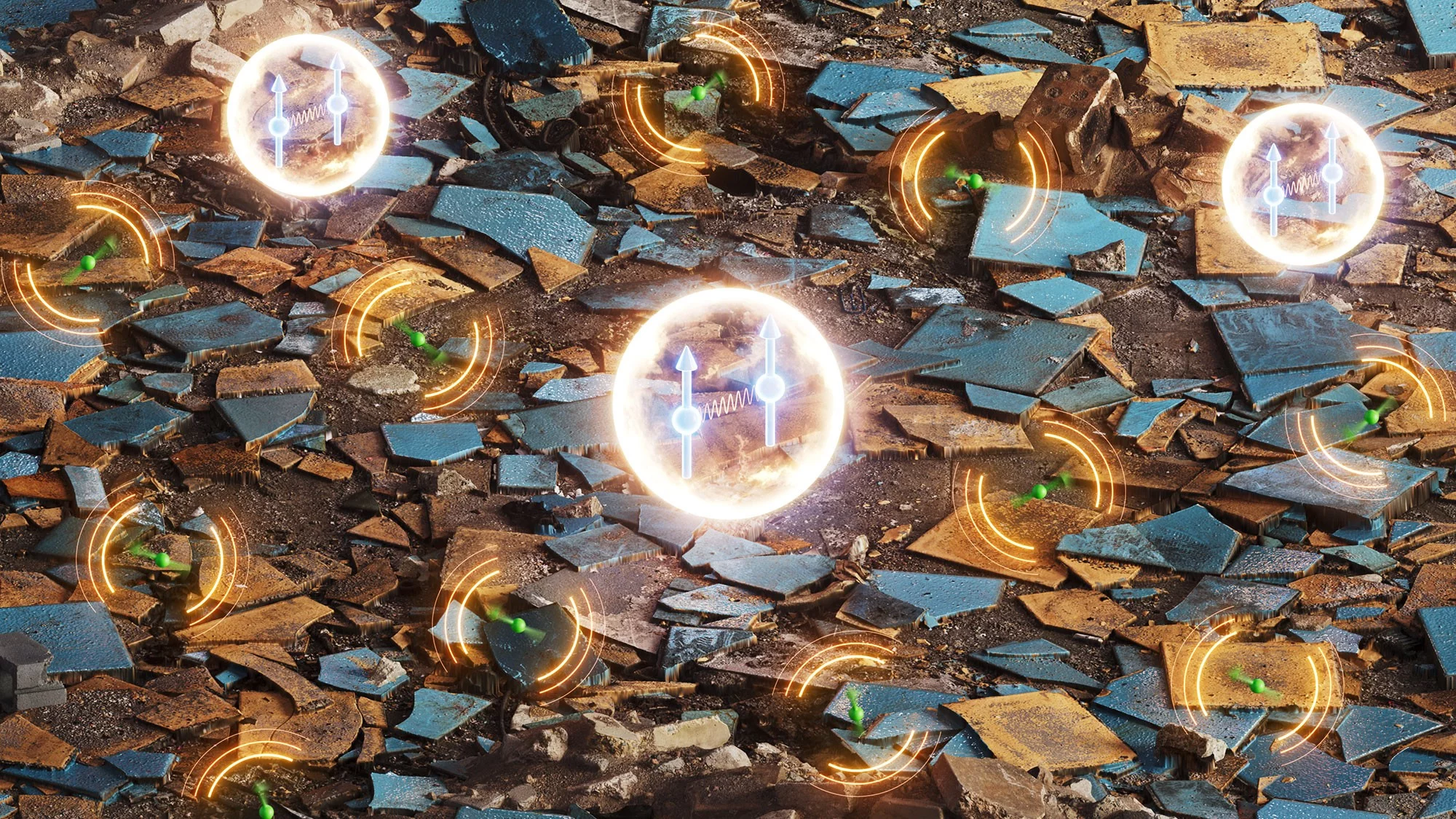New findings debunk previous wisdom that solid-state qubits need to be super dilute in an ultra-clean material to achieve long lifetimes. Instead, cram lots of rare-earth ions into a crystal and some will form pairs that act as highly coherent qubits, shows paper in Nature Physics.
Clean lines and minimalism, or vintage shabby chic? It turns out that the same trends that occupy the world of interior design are important when it comes to designing the building blocks of quantum computers.
How to make qubits that retain their quantum information long enough to be useful is one of the major barriers to practical quantum computing. It’s widely accepted that the key to qubits with long lifetimes, or ‘coherences’, is cleanliness. Qubits lose quantum information through a process known as decoherence when they start to interact with their environment. So, conventional wisdom goes, keep them away from each other and from other disturbing influences and they’ll hopefully survive a little longer.
In practice such a ‘minimalistic’ approach to qubit design is problematic. Finding suitable ultra-pure materials is not easy. Furthermore, diluting qubits to the extreme makes scale-up of any resulting technology challenging. Now, surprising results from researchers at the Paul Scherrer Institute PSI, ETH Zurich and EPFL show how qubits with long lifetimes can exist in a cluttered environment.
“In the long run, how to make it onto a chip is a question that’s universally discussed for all types of qubits. Instead of diluting more and more, we’ve demonstrated a new pathway by which we can squeeze qubits closer together,” states Gabriel Aeppli, head of the Photon Science Division at PSI and professor at ETH Zürich and EPFL, who led the study.
Picking the gems from the junk
The researchers created solid-state qubits from the rare-earth metal terbium, doped into crystals of yttrium lithium fluoride. They showed that within a crystal jam-packed with rare-earth ions were qubit gems with much longer coherences than would typically be expected in such a dense system.
“For a given density of qubits, we show that it’s a much more effective strategy to throw in the rare-earth ions and pick the gems from the junk, rather than trying to separate the individual ions from each other by dilution,” explains Markus Müller, whose theoretical explanations were essential to understand bamboozling observations.
Like classical bits that use 0 or 1 to store and process information, qubits also use systems that can exist in two states, albeit with the possibility of superpositions. When qubits are created from rare-earth ions, typically a property of the individual ions - such as the nuclear spin, which can point up or down – is used as this two-state system.
Pairing up offers protection
The reason the team could have such success with a radically different approach is that, rather than being formed from single ions, their qubits are formed from strongly interacting pairs of ions. Instead of using the nuclear spin of single ions, the pairs form qubits based on superpositions of different electron shell states.
Within the matrix of the crystal, only a few of the terbium ions form pairs. “If you throw a lot of terbium into the crystal, by chance there are pairs of ions – our qubits. These are relatively rare, so the qubits themselves are quite dilute,” explains Adrian Beckert, lead author of the study.
So why aren’t these qubits disturbed by their messy environment? It turns out that these gems, by their physical properties are shielded from the junk. Because they have a different characteristic energy at which they operate, they cannot exchange energy with the single terbium ions – in essence, they are blind to them.
“If you make an excitation on a single terbium, it can easily hop over to another terbium, causing decoherence,” says Müller. “However, if the excitation is on a terbium pair, its state is entangled, so it lives at a different energy and cannot hop over to the single terbiums. It’d have to find another pair, but it can’t because the next one is a long distance away.”
Shining light on qubits
The researchers stumbled upon the phenomenon of qubit pairs when probing terbium doped yttrium lithium fluoride with microwave spectroscopy. The team also uses light to manipulate and measure quantum effects in materials, and the same kind of qubits are expected to operate at the higher frequencies of optical laser light. This is of interest as rare-earth metals possess optical transitions, which give an easy way in with light. “Eventually, our goal is to also use light from the X-ray Free Electron Laser SwissFEL or Swiss Light Source SLS to witness quantum information processing,” says Aeppli. This approach could be used to read out entire qubit ensembles with X-ray light.
In the meantime, terbium is an attractive choice of dopant: it can be easily excited by frequencies in the microwave range used for telecommunications. It was during spin echo tests – a well-established technique to measure coherence times – that the team noticed funny peaks, corresponding to much longer coherences than those on the single ions. “There was something unexpected lurking,” remembers Beckert. With further microwave spectroscopy experiments and careful theoretical analysis, they could unpick these as pair states.
“With the right material, the coherence could be even longer”.
As the researchers delved into the nature of these qubits, they could understand the different ways in which they were protected from their environment and seek to optimise them. Although the excitations of the terbium pairs might be well shielded from the influence of other terbium ions, the nuclear spins on other atoms in the material could still interact with the qubits and cause them to decohere.
To protect the qubits further from their environment, the researchers applied a magnetic field to the material that was tuned to exactly cancel out the effect of the nuclear spin of the terbium in the pairs. This resulted in essentially non-magnetic qubit states, which were only minimally sensitive to noise from the nuclear spins of surrounding ‘junk’ atoms.
Once this level of protection was included, the qubit pairs had lifetimes of up to one hundred times longer than single ions in the same material.
“If we’d set out to look for qubits based on terbium pairs, we wouldn’t have taken a material with so many nuclear spins,” says Aeppli. “What this shows is how powerful this approach can be. With the right material, the coherence could be even longer.” Armed with knowledge of this phenomenon, optimising the matrix is what the researchers will now do.
Text: Paul Scherrer Institute / Miriam Arrell
© PSI provides image and/or video material free of charge for media coverage of the content of the above text. Use of this material for other purposes is not permitted. This also includes the transfer of the image and video material into databases as well as sale by third parties.
Contact
Original Publications
Emergence of highly coherent two-level systems in a noisy and dense quantum network
A. Beckert, M. Grimm, N. Wili, R. Tschaggelar, G. Jeschke, G. Matmon, S. Gerber, M. Müller and G. Aeppli
Nature Physics (15. January 2024)
DOI: 10.1038/s41567-023-02321-y

